The current Fiat 500 has been loved by young, fashionable urbanites since it was launched in 2007. There’s now an electric 500, too
Its classic predecessor – the Nuova 500 – first won over city drivers in 1957. Designed to get Italians on wheels, its diminutive dimensions, simple two-cylinder engine and cute-as-a-button styling earned it numerous fans. It proved so popular that it provided unashamed inspiration for its newer (and much larger) ancestor.
Replacing the front-engined 1936 Fiat 500 ‘Topolino’ (or ‘little mouse’), the Nuova (‘new’) 500 made use of the popular rear-engined template of the time. It followed in the tyre-tracks of its larger 600 predecessor, and was part of the ‘economic miracle’ that was post-war Italy’s decade-and-a-half of sustained economic growth.
Like the contemporary Volkswagen Beetle and Citroen 2CV, it can be considered one of the earliest mass-market ‘people’s cars’. It enjoyed an 18-year production run from 1957 to 1975.
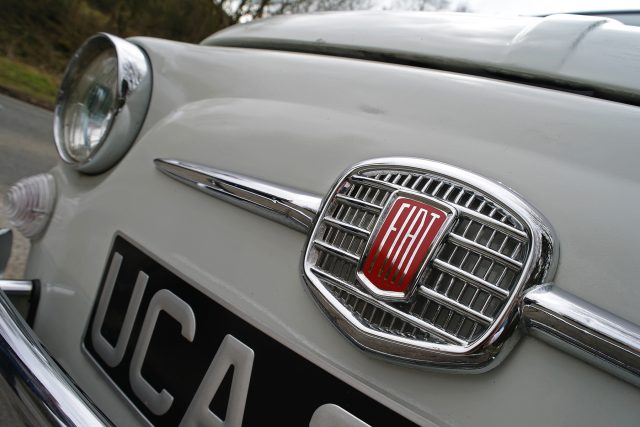
Replaced by the angular, but similar-in-concept Fiat 126, the Nuova 500 is now a popular classic car. With a simple concept and endearing character, it’s easy to see why more than four million Nuova 500s were produced. Our test car is a 1966 500 ‘F’ with a 499cc 18hp engine, provided by Great Escape Cars. The car has also been used on the Antiques Road Trip TV programme. It was imported from Milan in January 2015.
What are its rivals?
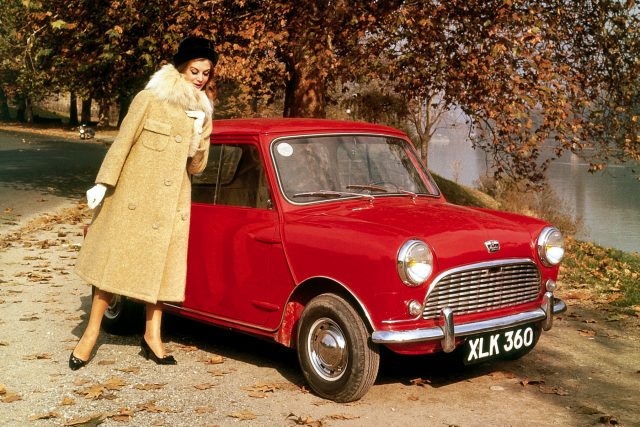
As its production run covered almost two decades, the Nuova 500’s rivals are varied. Perhaps the most obvious is the ground-breaking Morris Mini Minor/Austin Seven/Mini of 1959, which brought front-engined, front-wheel-drive technology to the mass market.
Similar in size to the 2,970mm Nuova 500, the 3,054mm Mini was more powerful: its 848cc four-cylinder engine developed 33hp – almost twice as much as the little Fiat. The 500 weighed less, though; the tiny Italian car tipped the scales at 470kg, versus the Mini’s 617kg.
As the Nuova 500 entered the 1960s, more rivals appeared in the shape of the two-cylinder 1961 NSU Prinz 4, as well as the Hillman Imp of 1963. Both newcomers shared a rear-engined layout with the Fiat, but had larger dimensions.
Coincidentally, there was another NSU link: the pretty Neckar Weinsberg 500 Limousette and Coupe were based on the Nuova 500 and produced by NSU/Fiat Weinsberg Karosseriewerke in Heilbronn, Germany.
Which engines does it use?
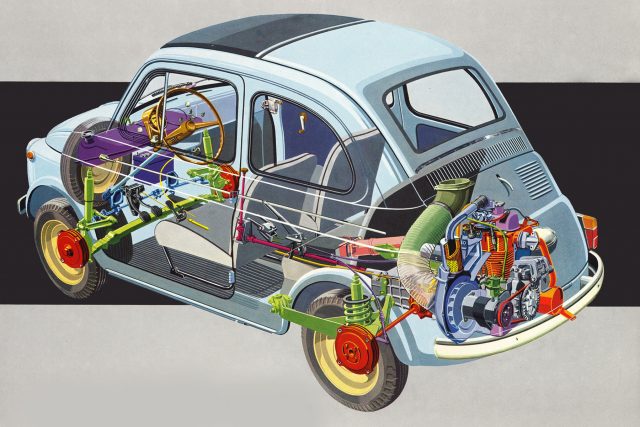
The first 500s were powered by a two-cylinder 479cc engine (500cc nominally, which gave the car its name). It initially developed 13hp, then later 15hp. A larger-capacity 499.5cc Sport variant mustered 21hp.
The 500 D arrived in 1960 and ushered in an enlarged 499cc two-cylinder engine, this time with 18hp, which powered the little car – including our 1966 500 F test model – until 1973. The final incarnation of the 500, the ‘R’, borrowed its 594cc engine from the similarly diminutive Fiat 126. It produced a heady 23hp.
Abarth versions were even more dizzying; engines ranged from 593cc to 689.5cc, with power outputs from 27hp to 38hp.
What’s it like to drive?
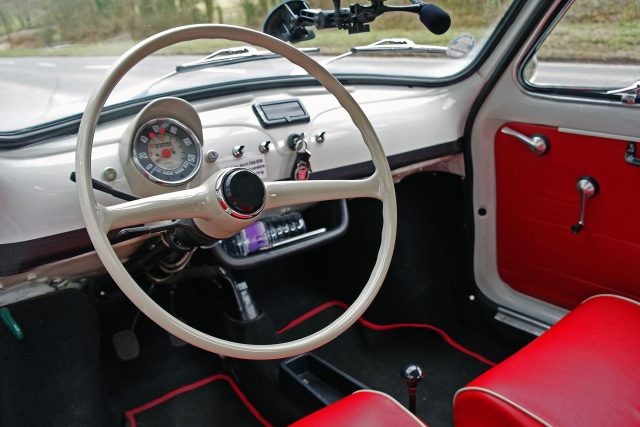
The first thing that strikes you when you get into a 500 is the amount of space. Despite its bijou size, it uses what interior space it has to much better effect than the new version. Thanks to its rear-engined, rear-driven layout, there’s no bulky transmission tunnel to get in the way, while its large and upright glasshouse makes it feel spacious and easy to place on the road.
On the move, the engine really has to be revved to get any decent performance. But while our mildly hilly, open-road test route wasn’t best suited to the little Fiat, it coped well. Once the engine is on-song, it does assault the ears somewhat, but don’t worry: it might sound like you’re doing it some damage, but that’s just how it is. Top speed is only 59mph, so motorway cruising is generally limited to the inside lane.
The hardest thing to master is the non-synchromesh ‘crash’ gearbox. You need to double de-clutch every time you change gear – you’ll do it very often – and it can be tricky to get the hang of. The steering feels vague out on the open road, too, but the 500 is quite nimble and light on its tyres. The brakes work well enough, and you’ll be glad when you have stopped, just to give your ears a rest. For a small car, the Fiat can feel quite demanding and tiring to drive. But isn’t that part of the fun?
Reliability and running costs
Although the downsized two-cylinder engine was a departure for Fiat, it has a reputation for being a tough little unit. The car’s non-synchromesh gearbox was used throughout its life, but thankfully it’s also famed for being strong. If it does need repairing, however, this isn’t a simple task.
The 500’s dinky dimensions mean parts prices aren’t too prohibitive: a front panel can cost around £75 from an independent specialist, while bonnets start at around £110. Door hinge repair kits are as little as £6, while doors themselves cost upwards of £350.
With not much power – and therefore not a huge amount of speed – the 500 has an advantage when it comes to fuel economy, with 53mpg commonly reported. All now fall under the VED historic vehicle exemption rule for cars registered before 1 January 1984, too, meaning they cost nothing to tax. To further keep costs to a minimum, a classic car insurance policy would be a wise investment.
Could I drive it every day?
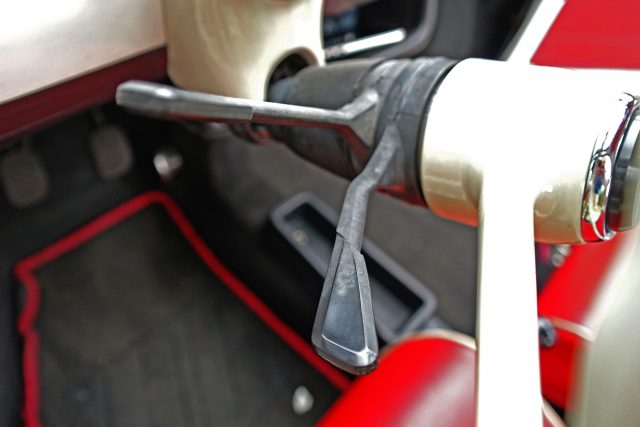
For today’s congested streets, the Nuova 500’s pint-sized footprint is perfect. A modern Smart car may still be shorter – so 90-degree parking facing the kerb is off the cards – but the 500 can nip through narrow streets that would be out of bounds to bigger cars, its modern relative included.
If you want more practicality, the equally cute Giardiniera estate version of the Nuova 500 was made from 1960 to 1977 and enjoyed a larger carrying capacity, thanks to the engine being turned on its side and mounted under the boot floor. Don’t forget the sunroof on the standard car, though – fold it back to carry long loads and you’ll possess the coolest load-lugger in town.
While longer journeys may prove more of a challenge due to that small engine, our 1966 test car provided modest fun out on the roads surrounding the Welsh borders. However, you do have to rev the little unit to its absolute limit, so it’s best to keep to the urban landscape.
How much should I pay?
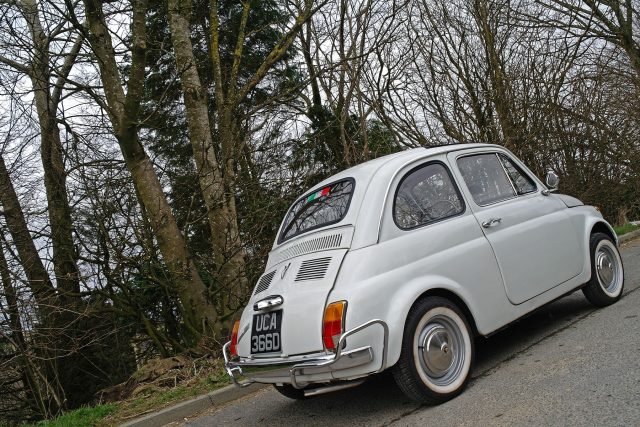
Most early-1970s, good-condition 500 F, L or R models command around £6,000-£10,000, while top collectors’ cars can go for upwards of £20,000. Restoration projects start from as low as £2,000.
Cars that need importing may be cheaper still, but don’t forget you will need import duty and VAT adding to the total bill. It goes without saying that cars that have been better cared for fetch higher prices – we spotted one 1971 500 F that had been resprayed, serviced and kept in a garage for £12,500.
Later 500 Rs are in demand as they offer a combination of the later running gear with the early, retro-style ‘round speedo’ dashboard, rather than the plastic padded one of the 500 L.
What should I look out for?
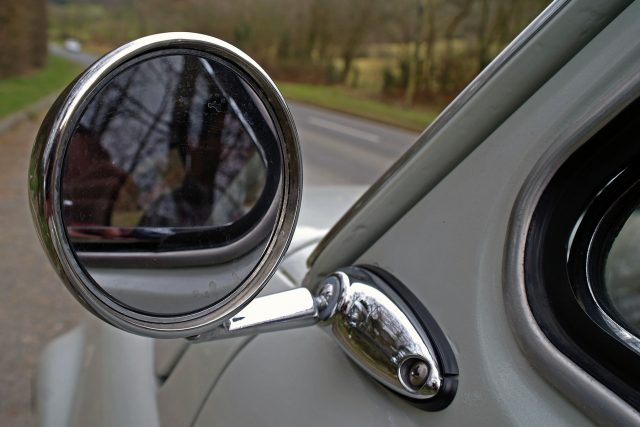
As with almost all retro cars, one of the biggest enemies of the 500 is rust. Examine the front panel behind the headlamps closely, along with the areas around the front and rear windows, as well as the engine cover. Don’t forget the usual spots, too, such as the bottoms of the doors, sills, wheelarches and wings.
Open the front bonnet and check there, paying particular attention to the battery tray and spare wheel well. The floor can need attention on cars that haven’t been looked after. Rot is usually caused by leaks from that same large sunroof that gives the car a certain amount of its character.
Oil leaks from the engine are common, but a lot of smoke from the exhaust suggests the little two-cylinder will need a rebuild. The dinky unit also relies on its cooling flaps working correctly – if they don’t, it can overheat and substantial engine damage can result. Also look for worn carburettors, timing chains and clean, regularly-changed spark plugs. A check of the suspension mounting points is also worth doing. Examine both the rear semi-trailing arms and the transverse front leaf spring for corrosion. The front kingpins will need re-greasing every 1,000-1,500 miles as well.
With so many leaving Fiat’s Lingotto factory in Turin, a great number of Nuova 500s will be left-hand drive like our test car. If it’s known that a particular car has been subject to a steering wheel swap to the right-hand side, an independent specialist can check the conversion has been carried out properly. As befits its car-for-the-masses roots, the 500’s interior is refreshingly simple. Wear and tear will be noticeable, but parts (as well as exterior panels) on early cars can be difficult to find.
Should I buy one?
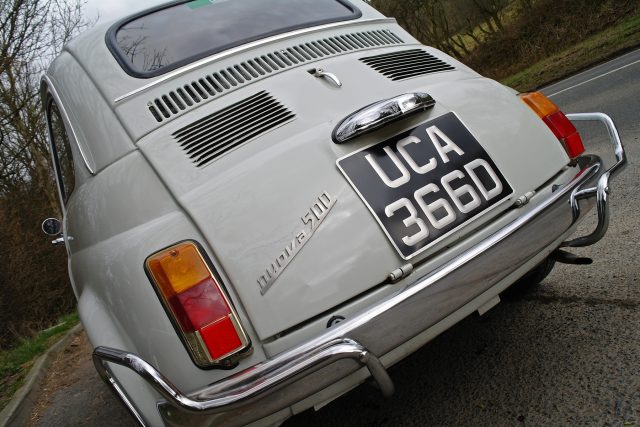
As with most classic cars, there’s characterful appeal to the 500 that rubs off on you as you drive it. A happy little car with plenty of personality, for retro-chic appeal, a Nuova 500 beats the current Fiat 500 hands-down. Healthy production figures mean there are still plenty around, and the tiny silhouette is one of the most well-known and endearing on the classic car scene. We’d buy one and keep it for high days and holidays, unless its condition and patina dictates everyday use.
Later 500 F and L cars from the mid-1960s onwards will probably be the most reliable, for those considering a long-term proposition. As well as the engine, last-of-the-line R cars shared some chassis parts with their 126 successor and will be more robust still. However, even the final examples are now well over 40 years old.
We’d probably have a Nouva 500 over a similar vintage Mini, purely for the added style and Italian character it offers. With a starring role as Luigi in the first Cars movie, your kids will thank you as well.
Pub facts
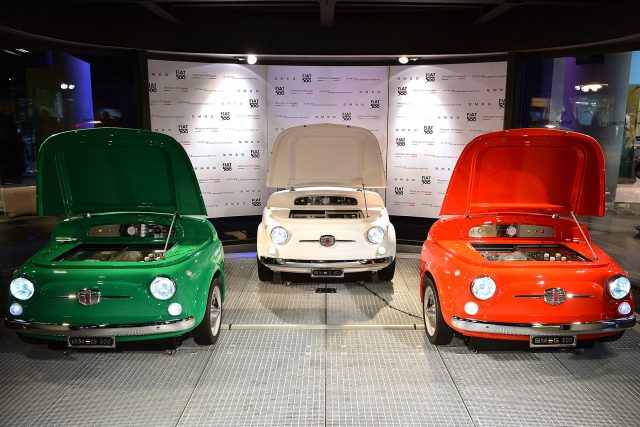
For the first eight years of its life, the Nuova 500 had reverse-hinged ‘suicide’ doors, but they were phased out in 1965 due to safety concerns. However, the Giardiniera estate car stuck with the rear-opening doors for all of its production run. Its wheelbase was also extended by four inches.
The original 500 was the first car to be offered with a flexible finance package, set to appeal to the bank of mum and dad.
And if you love your 500 that much and want to park it indoors, you can buy a Smeg fridge that immortalises the little Italian. ‘Because a refrigerator is not just a domestic appliance and a bonnet is not just a car’, the Smeg 500 has been available since 2013, and is based on the front of a Nuova 500. It has a 100-litre capacity and is available in traditional Italian red, green or white.
ALSO READ:
1980 Renault 4 GTL review: Retro Road Test



[…] 1966 Fiat 500 review: Retro Road Test […]